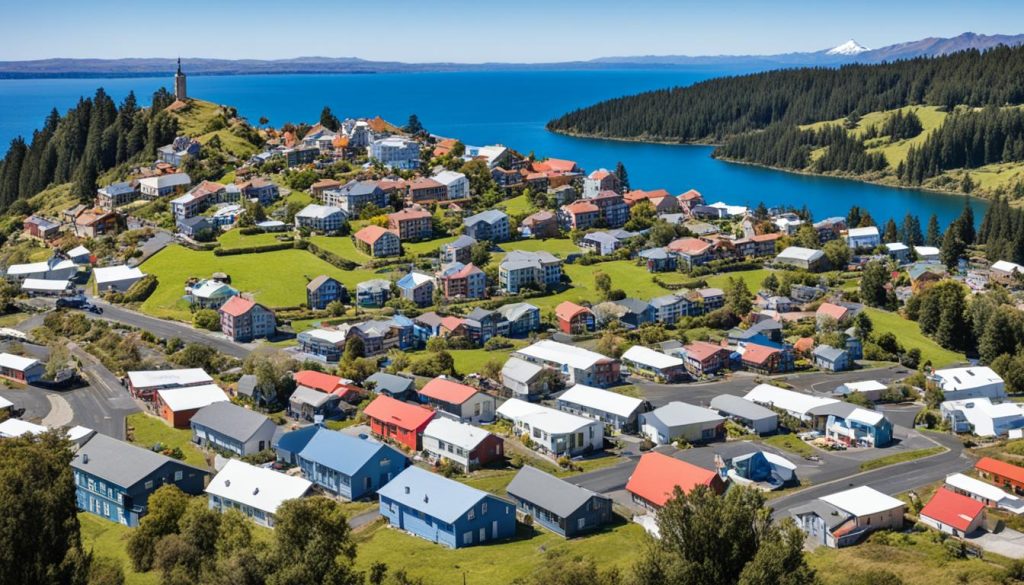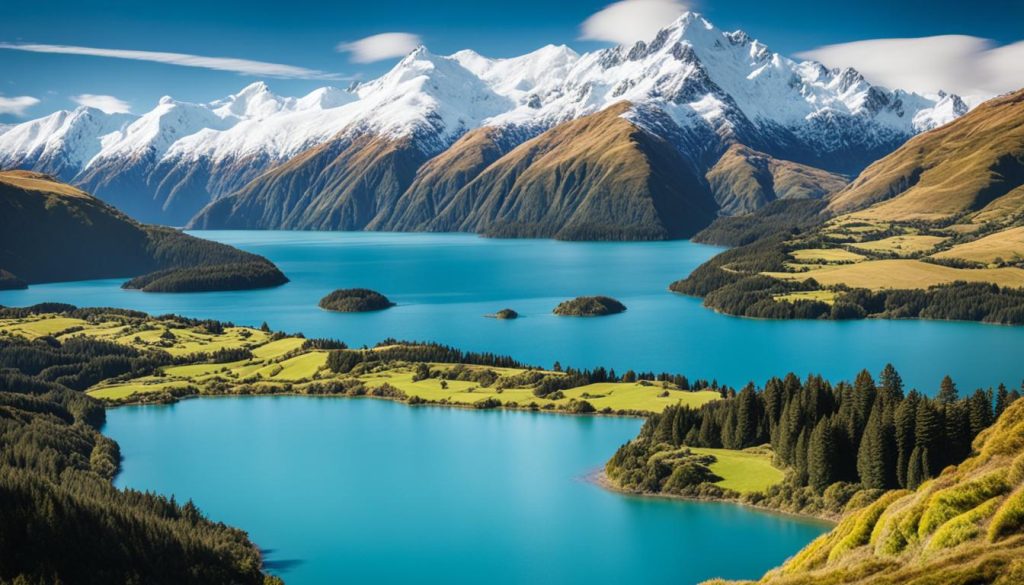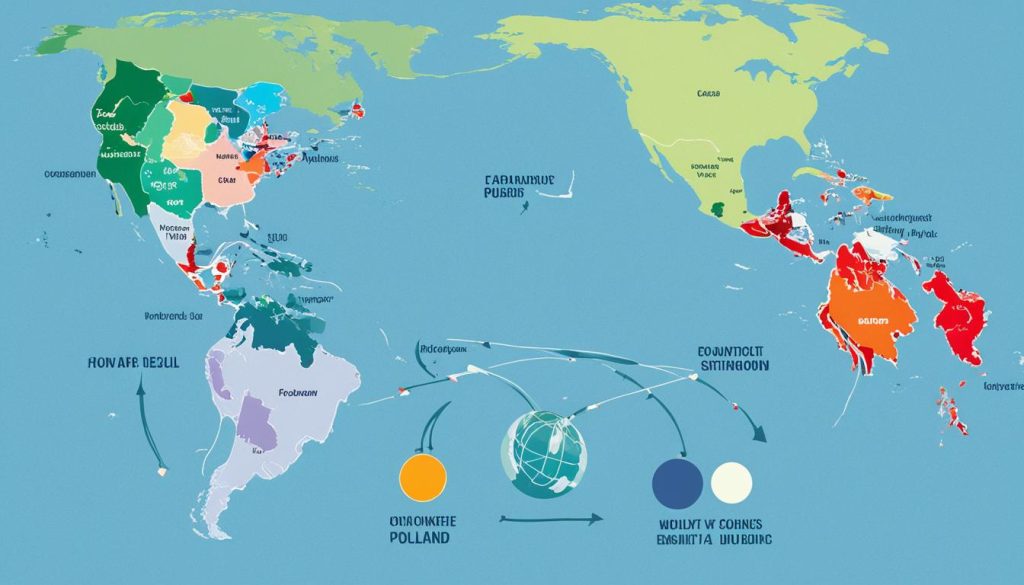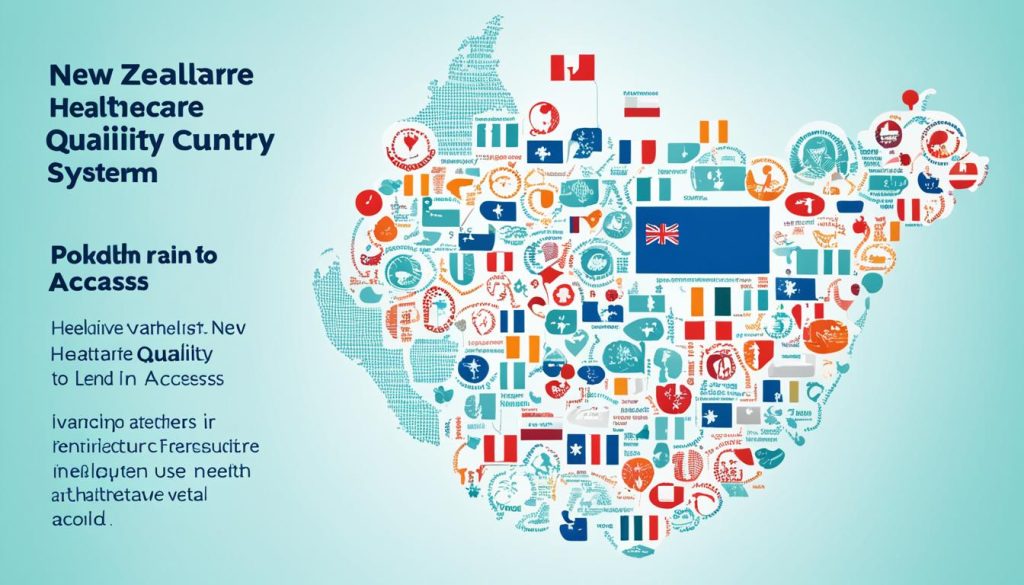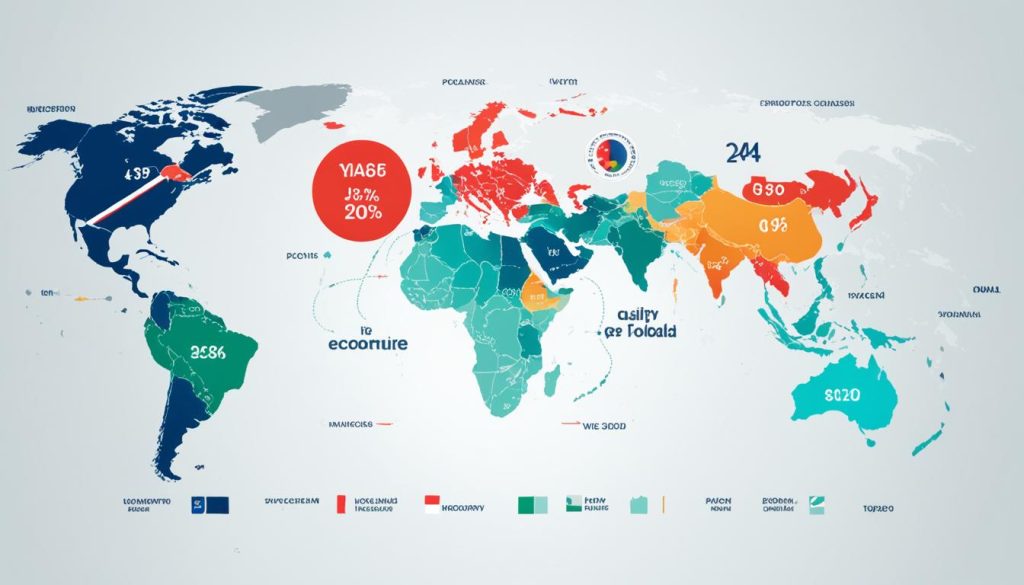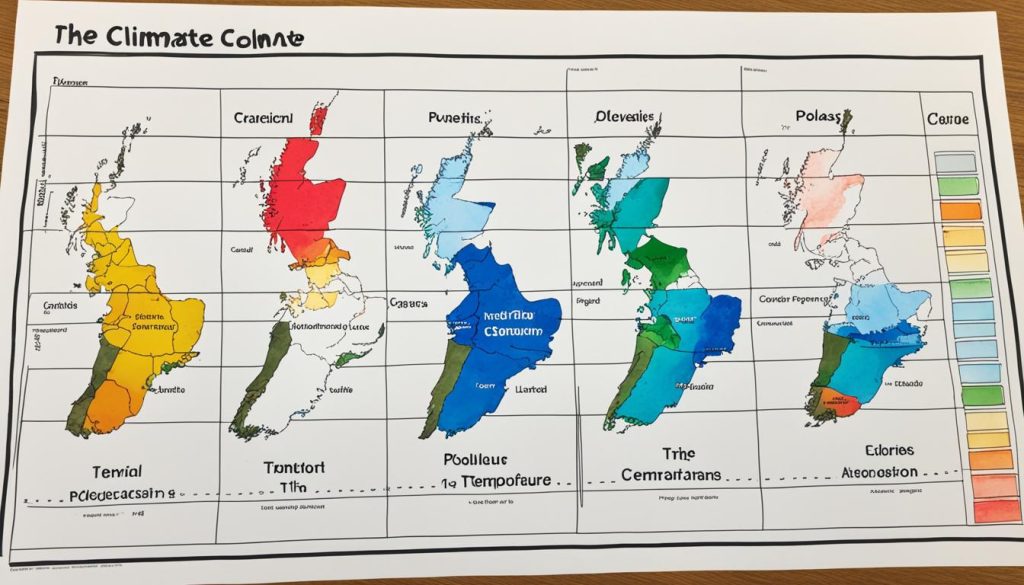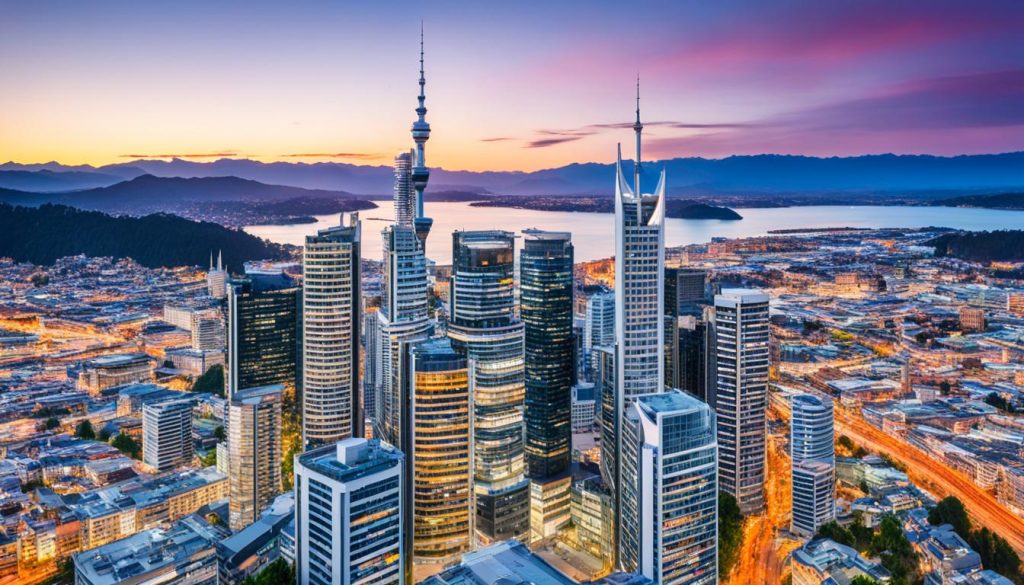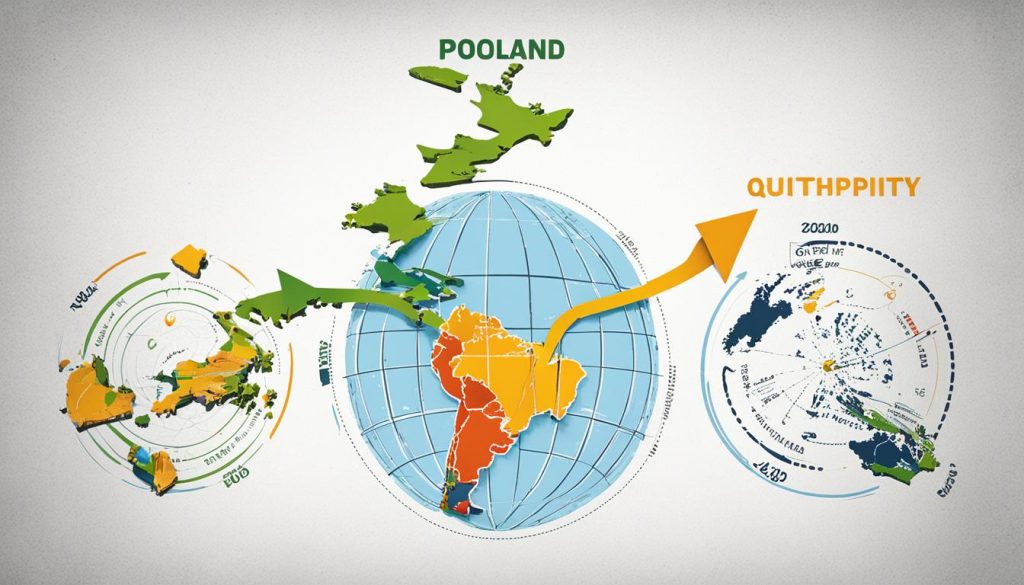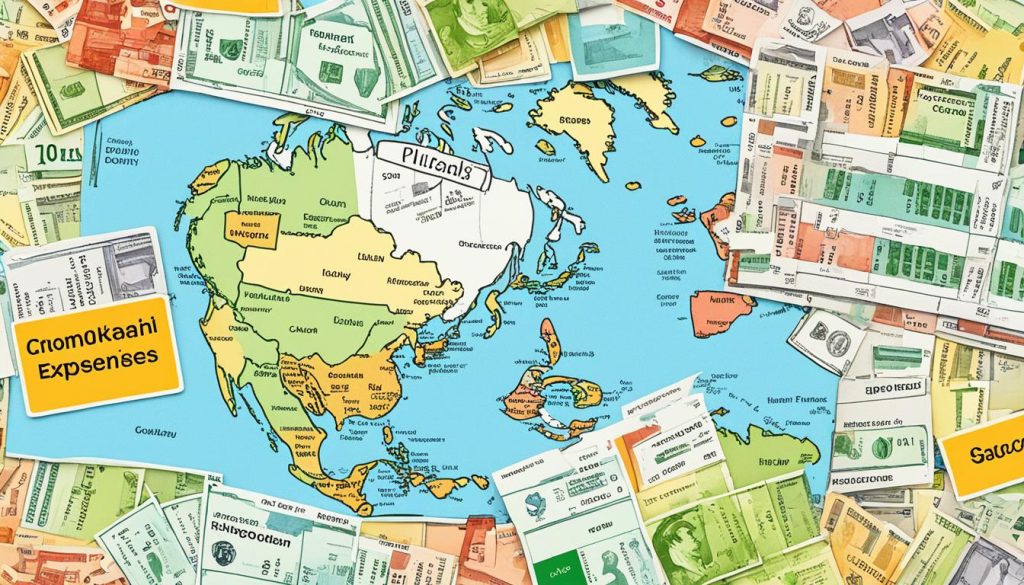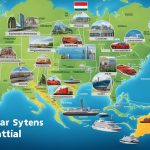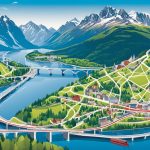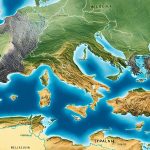Comparing New Zealand, India, and Poland shows many differences and similarities. We look at their economies, lifestyles, healthcare, and happiness. Each nation has unique aspects that affect its people’s lives.
Each country has its own story, influenced by history and geography. We explore how these three countries face their unique challenges. This journey shows how their political and economic systems impact people’s living standards.
Overview of New Zealand, India, and Poland
Exploring New Zealand, India, and Poland reveals more than different landscapes. It shows us the deep histories of New Zealand, the colonial past of India, and Poland’s big changes. These stories help us understand how each country governs today and their society’s make-up.
Geographical Size and Historical Context
New Zealand may be small, but it has a big heart. Its land spans about 264,537 sq km. The Waitangi Treaty in 1840 was a key event. It respected the Maori people’s rights and shaped today’s governance.
India, on the other hand, is vast and complex. Its history is marked by colonial rule. Now a sovereign republic, it covers over 3.287 million sq km. This shows India’s diverse and resilient nature.
Poland has faced much turmoil but has emerged strong. Its past includes invasions and struggles for freedom. Since the end of communism, Poland has shown impressive growth. It’s a symbol of rebirth and strength in Europe.
Modern-Day Governance and Society
These comparisons shed light on the distinct historical paths of each country. New Zealand is known for its stable democracy. India is admired for its diverse political system after colonial rule. Meanwhile, Poland is embracing democracy with vigor. These stories show how each nation balances traditional heritage with new ways of living.
- New Zealand has a parliamentary democracy within a constitutional monarchy. This shows its blend of tradition and modern rule.
- India is the world’s biggest democracy. It weaves its colonial past into today’s federal structure.
- Poland’s growth after communism is a testament to democracy in Europe. It shows how countries can evolve and succeed.
From New Zealand’s peaceful beaches to Mumbai’s lively streets, and Warsaw’s historic core — these stories enrich our understanding of the world. They show how New Zealand, India, and Poland’s histories shape global governance and society today.
Political and Economic Stability Comparison
New Zealand, India, and Poland each offer unique insights into how political and economic stability play a vital role in a country’s success. The relationship between a stable government, a strong economy, and the confidence this brings on the world stage is crucial.
Government Effectiveness and Long-term Risks
In New Zealand, the government’s ability to manage and deliver to its people stands out. Its policies have spurred economic growth, reduced risk, and enhanced governance. This makes New Zealand viewed positively worldwide.
India, on the other hand, faces challenges. Despite its large and diverse population, it strives for effective governance. Volatility in political and economic realms sometimes surfaces, yet reforms are underway to improve its situation.
Poland has seen positive changes since moving away from communism. Improved economic stability and governance have come about, reducing economic risks. However, continued reforms are necessary to maintain progress in a young democracy.
World Bank’s “Worldwide Governance Indicators”
The World Bank’s “Worldwide Governance Indicators” offer a window into the governance quality of these countries. They assess factors like accountability, regulatory quality, and corruption control. This helps us understand the strengths and challenges each country faces in governance.
- New Zealand shines in government transparency, showcasing its strong governance.
- India presents a complex picture, balancing progress with ongoing challenges.
- Poland’s commitment to meet European standards has positively impacted its governance, leading to steady improvements.
By examining political and economic stability, effectiveness, and governance, we gain valuable insights. These insights reveal how New Zealand, India, and Poland are positioned globally today and into the future.
Analysing the Legal System and Civil Rights
Looking closely at different legal systems and civil rights is fascinating and key. We check how New Zealand, India, and Poland apply and understand the rule of law. We dig into how their governments respond, respecting or questioning justice from their citizens’ view. This helps us grasp each nation’s law basis and the state of civil freedoms and their protection.
- Legal System Comparison: A thorough examination of how the legal systems operate across these nations, focusing on the independence of the judiciary, the efficiency of legal processes, and access to legal recourse for the public.
- Civil Rights Assessment: Scrutiny of the established protections for civil liberties, such as freedom of speech, freedom of assembly, and the right to privacy, and how these are respected or violated in practice.
- Rule of Law: Investigation into the consistency of law enforcement and the equality of all individuals before the law, including protection from arbitrary state action and corruption.
- Government Compliance: An analysis of states’ adherence to legal norms and international standards, including their commitment to implementing rulings and rectifying instances of rights infringements.
Our study shows how culture and politics shape each place’s legal identity. It highlights the legal world’s complexity and ongoing change in these varied areas.
Health Services Overview in Each Country
The health of a nation largely rests on its healthcare systems. The strength of healthcare infrastructure and the ease of getting medical care are key. These factors help us understand a country’s overall health. Looking at life expectancy and doctors per person in New Zealand, India, and Poland can teach us a lot about their healthcare.
Life Expectancy as a Health Indicator
Life expectancy shows how well a country looks after its people’s health. Countries with longer life spans show they value and invest in good health services. This means they are committed to keeping their people healthy.
- Leveraging medical advancements with broad accessibility initiatives
- Investing in preventative care to mitigate chronic health conditions
Healthcare Infrastructure and Accessibility
Good health services need to be both high-quality and accessible to everyone. The number of doctors and healthcare facilities like hospitals and clinics tells us a lot. This shows how well a country can care for its people’s health.
- Building and maintaining state-of-the-art medical facilities
- Ensuring an even spread of healthcare services across urban and rural areas
Each country has its own way of providing healthcare. But, all aim to improve how long people live and access to medical care. Understanding healthcare is complex. It involves many parts, from buildings and tools to having enough skilled staff.
Assessing Safety and Security Across Three Nations
Understanding how safe and secure a country’s people feel is crucial. It impacts everything from their freedom to how well the economy does. When we look at countries like New Zealand, India, and Poland, we consider many things. We look at their security index, peace ranking, and crime rates.
The 2023 Global Peace Index helps us see how peaceful these countries are. It shows us how safe and secure societies are, how much conflict they have, and their military involvement.
- Analysis of the security index unveils the preventive measures and law enforcement capacities in place to curb crime and ensure safety.
- Examination of peace rankings measures the countries’ efforts in maintaining peace both within and beyond their borders.
- Review of crime rates, specifically focusing on violent crimes such as assault and murder, provides transparency into the day-to-day safety of the citizens.
This in-depth way of looking at safety and security tells us a lot. It shows how these countries protect their people and maintain peace. Including how citizens feel and how well the police work, these elements give a full picture of safety in New Zealand, India, and Poland.
Evaluating Climate’s Impact on Quality of Living
When looking at the climate comparison between New Zealand, India, and Poland, we see unique environmental features. These features significantly affect the environmental comfort of their people. Finding the right balance of optimal temperatures and humidity impact is key to a good life in these places.
The perfect climate for human comfort has moderate temperatures and low humidity. This ideal varies greatly across New Zealand, India, and Poland. New Zealand’s temperate maritime climate means it has mild weather. This makes it a top choice for those seeking a pleasant climate.
Poland experiences more climate change. Its winters are cold, and summers are warm. This variation might influence how people feel about their living conditions throughout the year.
India, however, has a vast range of climates. Its southern areas are hot and humid, while the north has milder weather. This diversity makes finding optimal temperatures difficult. The intense humidity impact during monsoon seasons can also affect everyday life and health.
- New Zealand: Mild and invitingly consistent weather patterns
- India: Wide-ranging climates from sultry tropics to cooler highlands
- Poland: A mix of warm summers and notably harsher winters
In conclusion, no country has the ultimate climate for everyone. The mix of temperature, humidity, rain, and sunshine matters a lot. It can significantly shape how we view our comfort and quality of life.
Cost of Living: A Critical Factor in Quality of Life
When thinking about moving or comparing life in different countries, it’s key to look at living costs. This means looking at the average income, taxes, and how businesses do. In places where it costs a lot to live, high income doesn’t always mean a better life. This is true if big taxes or business challenges offset the income.
Comparison of Average Annual Income
The average income of a country tells us a lot about how well its people can live. Generally, a higher income suggests more money for people to spend on a comfy life. Yet, the income number alone doesn’t tell the full story. We also need to consider living costs to understand the real value of income. Let’s look at how New Zealand, India, and Poland stand in this regard.
- The average annual income in New Zealand shows it’s a developed country with higher wages.
- In India, incomes are lower, but living costs vary greatly from the countryside to cities.
- Poland’s economy is growing, offering an interesting scenario of rising incomes and reasonable costs.
Tax Rates and Ease of Doing Business Index
The tax system in a country directly affects people’s money and businesses. A heavy tax load can lower what people take home, alter savings, and change spending habits. But, taxes tell just part of the economic story. How easy it is to do business in a country also matters a lot. It can affect foreign investment and how businesses grow.
- New Zealand’s tax system has different levels, affecting how much money people keep.
- In India, changing taxes and rules can make doing business complex, impacting local and foreign businesses.
- Poland, however, is working to be business-friendly with good corporate taxes and policies.
Looking at these elements helps understand the economic scene better. This on its own improves living quality and success for people and businesses.
Income Levels and Economic Opportunities
Looking into New Zealand, India, and Poland’s economics shows interesting facts about their money health and future. Income rates tell us about the economic activity and chances for growth. Governments use policies to manage employment rates and social spending. This forms a mix of chances for making money and safety nets. These are key in seeing if a market is good and if people live well there.
Analysing Unemployment Rates and Social Expenditure
Joblessness rates and how much is spent on social matters are key to seeing a country’s economic strength. They show us how well a country uses its people and protects them from money troubles.
- Income levels show how well employment is doing by showing what workers earn. More income usually means the economy is doing well and there are many jobs.
- Unemployment rates tell us about people who can’t find jobs despite looking. Lowering unemployment is crucial for a steady economy as ongoing joblessness harms growth.
- Social spending is about the money the government uses for social services and help programs. It’s key in supporting those in need and shows a society’s dedication to its vulnerable members.
Looking at these factors helps us get the full picture of a country’s current and future economic and social wellbeing.
Living Expenses: From Necessities to Luxuries
We explore the difference between daily living expenses and the cost of basics versus luxuries. This gives us insight into the economic pressures in New Zealand, India, and Poland. Everyday expenses are critical for household budgets and life quality. Discretionary buys show economic strength and living standards.
New Zealand offers a high life quality but basics can be pricey. This is due to its remote location and high import costs. Yet, many can afford luxuries, showing disposable income for indulgences.
India shows a contrast. Despite a growing economy and low costs for essentials, vast income gaps limit luxury access for many. Here, families prioritize needs over wants, with luxuries often out of reach.
Poland, in its growth, presents affordable daily costs and an improving life quality. Being in the EU, it offers better access to both necessities and luxuries than Western counterparts. This creates a balanced affordability for its people.
- Looking at spending on housing, food, and healthcare gives us a sense of daily living expenses in each country.
- Checking prices of luxury items like electronics and cars shows the luxury goods affordability.
- Reviewing taxes on luxuries sheds light on government strategies affecting living costs and luxury access.
From grocery costs to high-end goods pricing, geography, society, and economy mix to define living costs. As we delve into these factors, we get a broader view of affordability and economic health across these countries.
Assessing the Popularity of New Zealand, India, and Poland
When we think about what makes a country popular, a few things come to mind. We look at how many people move there, the number of tourists, and how happy the people are. These factors tell us why a country is attractive, both culturally and economically.
Migration Rates and Tourism Statistics
How many people move to a country shows its popularity. It reflects the economic health, quality of life, and chances for success. New Zealand, India, and Poland show different migration trends. These trends are shaped by job chances, education quality, and lifestyle.
Tourist numbers also show how appealing a country is. This not only proves the country’s attractions but boosts the economy too. Tourists visit New Zealand for adventure, India for culture, and Poland for history. These visits show the unique appeal of each country.
The UN World Happiness Report Findings
The happiness of people in these countries gives us more clues. The UN World Happiness Report examines economic, social, and governmental effects on life. This report helps us see what makes a country a good place to live. It shows what’s working and what needs betterment.
- New Zealand is liked for its calm and community life.
- India’s growing economy and culture attract migrants and tourists.
- Poland’s happiness is rising due to economic and social progress, appealing to many.
Understanding these factors helps us grasp migration, tourism, and happiness in these countries. Clearly, these aspects link together, forming a country’s global image and inner joy.
Educational Standards and Opportunities
The path to knowledge and how we prepare future leaders relies a lot on education quality. Looking at New Zealand, India, and Poland, we see different approaches. Each country’s education system is unique, shaped by their history, culture, and finances.
New Zealand’s education is supported by strong infrastructure. It promotes cutting-edge research and new ways of teaching. India works hard to improve education for its huge number of students. It uses government programs to make learning more accessible and varied. Poland has increased its education investment over the past ten years. This has greatly improved its academic setting, benefiting graduates.
- Education Quality: New Zealand focuses on rigorous courses and evaluations to keep high standards. In contrast, India faces challenges due to its diverse student population but is making progress with reforms. Poland’s system, known for excellent vocational training and higher education, does very well in European education rankings.
- Learning Infrastructure: New Zealand has up-to-date facilities and a good teacher to student ratio. This helps with personalised learning. Poland has enhanced its learning spaces, both physical and digital. India is trying to improve its infrastructure with ambitious digital programs.
- Academic Performance: New Zealand’s students do well in reading, science, and maths, above the OECD average. India sees varied results across regions due to different living conditions. Poland’s academic performance is on the rise, showing its commitment to education.
The journey of New Zealand, India, and Poland shows the worldwide need for top-notch education. Such systems must offer access to all and keep up with a fast-changing knowledge economy.
Infrastructure and Transportation Efficacy
Looking into how investing in infrastructure and improving public transport boosts economies is important. It shows how crucial good transport systems are for connecting places and making business and fun accessible in New Zealand, India, and Poland. By doing this, we see if the infrastructure in these countries meets the needs of their people and economy.
Firstly, putting money into infrastructure is key for a country’s growth. This includes building and maintaining roads, bridges, railways, and ports. These are essential for economic activities and travel to run smoothly. We’re exploring how well-planned and funded these investments are, to see if these countries are prepared for the future.
- Extent of current infrastructure investment initiatives
- Plans for future development and upgrades in infrastructure
- Challenges faced in maintaining and expanding the infrastructure
Next, we look at how good the public transport is. This involves checking the availability, reliability, and comfort of different transport modes. A strong transport network makes life better by making travel easier and cheaper.
- User satisfaction with public transportation services
- Accessibility of public transport across urban and rural areas
- Measures taken to enhance the safety and convenience of public transit
Lastly, we consider travel efficiency, which is the result of good infrastructure and public transport. Efficiency means not just speed but also less congestion, better routes, and lower environmental harm. An efficient travel system balances people’s need to move with the goal of being environmentally friendly.
- Impact of efficient travel on daily commute times
- Improvements in logistics and freight transportation
- Contribution of travel efficiency to lower carbon footprints
In conclusion, examining these elements shows how New Zealand, India, and Poland use infrastructure and transport. This leads to better travel, helping their economies and society’s well-being.
Cultural Richness and Diversity
New Zealand, India, and Poland boast rich cultural landscapes. They merge their cultural heritage, vibrant arts, and social diversity. This unique blend enriches locals’ lives and fascinates people worldwide.
In New Zealand, Māori culture is a key part of the nation’s identity. It balances ancient traditions with modern art. The haka, a traditional Māori war dance, is a powerful expression of this blend.
India’s culture is complex, with each state adding its own flair. It has unmatched social diversity, seen in its languages, religions, and ethnicities. The arts overflow with colour and spirituality, including classical dances and Tagore’s literature.
Poland offers a unique view on cultural preservation in Europe. Time-honoured traditions and modern art coexist here. The focus on arts, seen in galleries and theatres, keeps the nation’s cultural story alive.
- Emphasis on the inter-generational transmission of folklore and craftsmanship.
- Architectural heritage reflected in the preservation of historic sites and buildings.
- Social narratives encapsulated in the music, literature, and visual arts that span centuries.
Each country shows a commitment to their cultural heritage and diversity. This dedication highlights the arts’ power to tell and celebrate humanity’s stories globally.
Quality of Environment and Sustainability Efforts
The quality of life in different countries greatly depends on their environment. Nations such as New Zealand, India, and Poland have unique landscapes and various levels of cities that affect their surroundings. A country shows its commitment to nature and economic growth through its sustainability efforts. These initiatives aim to protect our planet for the children of tomorrow.
Having strong green policies is key for balancing economic growth with the care of our environment. Laws and rules about recycling, using renewable energies, and saving nature show a country cares about keeping the environment clean. The connection between making policies and their effect on our world highlights the need for leaders to think sustainably.
- Eco-friendly legislation and carbon footprint reduction targets
- Protection of natural habitats and biodiversity conservation
- Innovations in sustainable technologies and green infrastructure development
- Community-based initiatives promoting environmental awareness and stewardship
Looking forward, we see that being sustainable is a choice we make together for a better future. Countries leading in sustainability are not only protecting their beautiful landscapes and animals. They are also creating a healthier and stronger community for everyone.
Conclusion
We have looked at different countries like New Zealand, India, and Poland to compare living standards. In this journey, we explored how each country is unique in its way of life. New Zealand is peaceful, India is full of life, and Poland shows strength through hard times.
Each country shows its own mix of good and bad points. New Zealand is known for its great healthcare and beautiful nature. Poland is becoming stable economically and is building better infrastructures. India, despite its economic growth, faces challenges due to its large population and social differences. These aspects help us understand how a country’s resources and identity affect its people’s well-being.
In concluding our look at the economic conditions, it’s clear that each country stands out on the global stage because of its unique society. This comparison not only helps us see how each country is doing but also makes us value the diverse ways people strive for a better life worldwide. It reminds us that the journey towards improving life is ongoing and varies across different lands and cultures.

